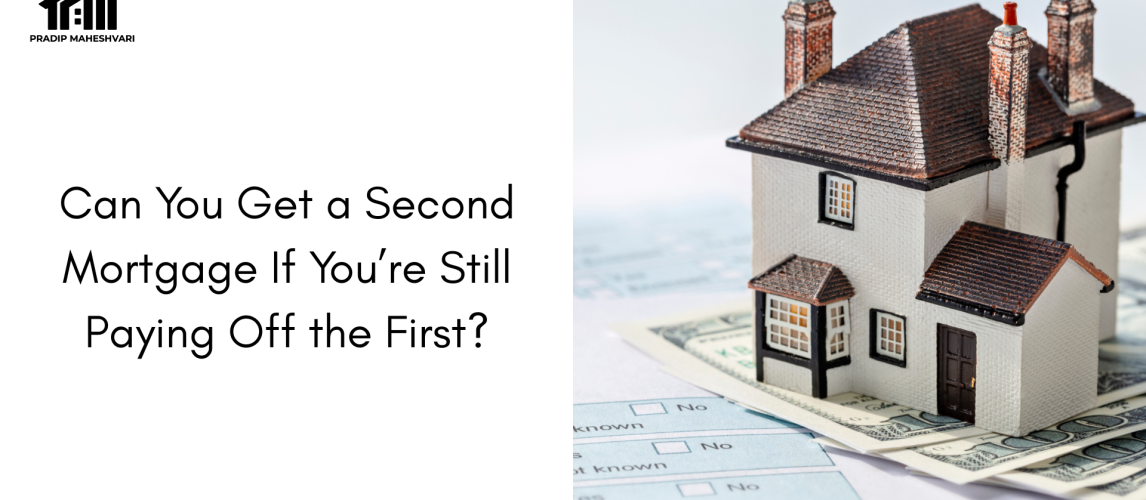Second mortgages are not uncommon in Canada. Homeowners often turn to them for renovations, debt consolidation, or funding major expenses. But if you’re still repaying your first mortgage, you may wonder whether you’re eligible for a second.
Yes, you can get a second mortgage while still paying off your first. However, approval depends on your available home equity, creditworthiness, income stability, and lender criteria. This guide breaks down how second mortgages work, how they’re approved, and what you should consider before applying.
What Is a Second Mortgage?
A second mortgage is an additional loan secured against your home. The first mortgage remains the primary loan, while the second is subordinate, meaning the second lender gets paid only after the first one in case of default or sale.
There are two types of second mortgages:
- Home Equity Loan: You receive a lump sum, repayable in fixed monthly amounts over a set term.
- Home Equity Line of Credit (HELOC): You borrow as needed, up to a maximum credit limit, and repay based on usage.
Both options use the equity in your property as collateral.
How Does Equity Work in a Second Mortgage?
Equity is the difference between your home’s current market value and the outstanding balance of your first mortgage. It’s the portion of your home you truly own.
For example:
- Home value: $600,000
- First mortgage balance: $350,000
- Available equity: $250,000
Lenders usually allow you to borrow up to 80% of your home’s value across both mortgages. So, in the example above:
- 80% of $600,000 = $480,000
- Minus $350,000 (first mortgage)
- Maximum potential second mortgage: $130,000
What Are the Eligibility Criteria?
Getting approved for a second mortgage while still repaying your first depends on several key factors:
1. Sufficient Equity
You must have enough equity built up in your home. Lenders won’t allow total borrowing above 80%–85% of your home’s appraised value.
2. Credit Score
A strong credit score (typically above 650) improves your chances. Lower scores might still qualify, but interest rates may be higher.
3. Stable Income
Lenders need to see proof of income that supports repayment of both mortgages. Debt-to-income ratio is carefully reviewed.
4. Property Type and Condition
Second mortgages are easier to secure on owner-occupied, detached homes in good condition. Condos or investment properties may have stricter requirements.
5. Lender Type
Traditional banks may be more conservative. Private lenders or alternative mortgage companies may approve riskier applications, but at higher costs.
Why Get a Second Mortgage?
Second mortgages are used strategically to access funds without refinancing or breaking the first mortgage. Common uses include:
- Home renovations that improve property value
- Debt consolidation of high-interest credit cards or loans
- Paying for education or major family expenses
- Business investment or startup funding
- Covering medical costs or emergencies
Borrowers choose second mortgages to avoid penalties on their first mortgage or when the interest rate is locked in favorably.
What Are the Risks?
While second mortgages provide access to significant funds, they come with added risk.
Increased Monthly Payments
You’ll now have two mortgage payments to manage. Failing to keep up could lead to penalties or foreclosure.
Higher Interest Rates
Second mortgages typically have higher interest rates than first mortgages because of the increased risk to lenders.
Reduced Future Flexibility
Borrowing against your equity limits your options if you later want to refinance, sell, or borrow more.
Possible Legal or Legal Fees
Appraisal, legal fees, and administrative costs apply, often similar to closing costs for a new mortgage.
How to Apply for a Second Mortgage
If you’re ready to explore a second mortgage, follow these steps:
Step 1: Assess Your Equity and Goals
Get an updated home appraisal to understand your available equity. Define why you need the funds and what you’ll use them for.
Step 2: Review Your Finances
Check your credit score, gather proof of income, and calculate your debt-to-income ratio.
Step 3: Compare Lenders
Traditional banks, credit unions, mortgage brokers, and private lenders offer second mortgages. Compare interest rates, terms, and costs.
Step 4: Get Pre-Approved
Pre-approval will give you an accurate estimate of how much you can borrow and at what terms.
Step 5: Finalize and Close
Provide documentation, undergo property assessment, and complete legal processes. Once approved, funds are released directly.
Can You Refinance Instead of a Second Mortgage?
Yes, some homeowners opt to refinance their first mortgage rather than take a second. This means paying off the existing mortgage and rolling the new funds into a single, larger loan.
Pros:
- Lower overall interest rate
- Single payment
- Access to more capital
Cons:
- Early repayment penalties may apply
- You may lose your current rate if it’s more favorable
- Refinancing involves full re-qualification
Compare both options based on your financial goals and timelines.
Conclusion
Yes, you can get a second mortgage even if your first is still active. The key is having enough equity, a solid credit profile, and the ability to handle two payments. Lenders consider your full financial picture, so preparation is essential.
For tailored second mortgage solutions in Canada, Pradip Maheshvari can help assess your options and guide you through a smooth approval process, whether you’re consolidating debt, renovating, or managing large expenses.


No comment yet, add your voice below!